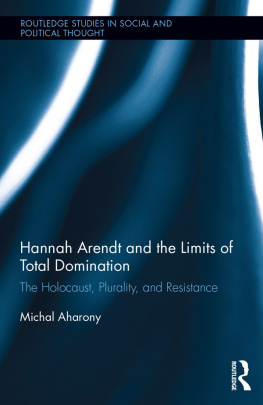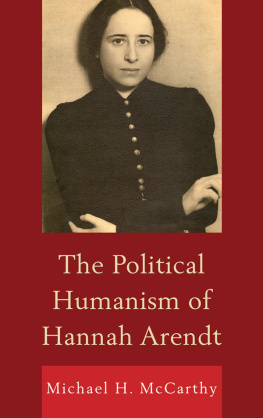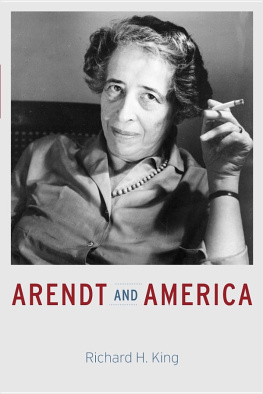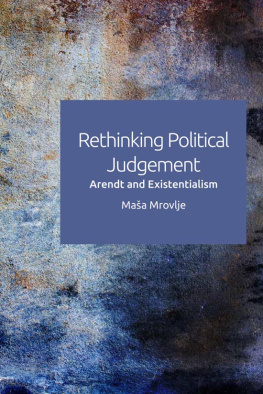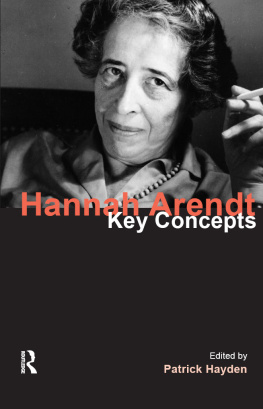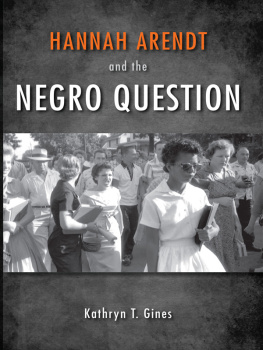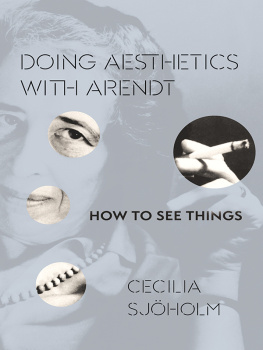Perspectives on Jewish Texts and Contexts
Edited by
Vivian Liska
Volume
ISBN 9783110663099
e-ISBN (PDF) 9783110663471
e-ISBN (EPUB) 9783110664300
Bibliographic information published by the Deutsche Nationalbibliothek
The Deutsche Nationalbibliothek lists this publication in the Deutsche Nationalbibliografie; detailed bibliographic data are available on the Internet at http://dnb.dnb.de.
2020 Walter de Gruyter GmbH, Berlin/Boston

This book was published in Hebrew by the Van Leer Jerusalem Institute and Hakibbutz Hameuchad Publishing House, 2006.
Chapter 1 Visitation
1.
On receiving the Annunciation from the archangel Gabriel, the Virgin Mary learns that her aging relative Elizabeth, too, infertile until then, is six months pregnant. Mary decides to pay her a visit. The reason for this visit is not mentioned. All this happens, writes (2001a), as though the miracle had to be confirmed twice over, by means of two mysterious and inconceivable pregnancies. Marys visitation with Elizabeth comes close on the heels of the archangels, and before that, Gods visitation; resonating them. It also inaugurates a broad semantic field, reminding us of the Biblical Hebrew root P.K.D. [] visit, befall which moves between the extremes of favorable and disagreeable remembering; between recompense and punishment; between presence and absence. Visitation connotes scrutiny, experiencing something, and rendering yourself account of the experience or the trial.
God visits Elizabeth and Mary. Way back in the past he had visited Sarah, wife of Abraham. The book of Genesis sets down two principles of origin: the principle of spirit and the principle of flesh, the principle of Sarah and the principle of Hagar. The tension between these two principles caused the very idea of the family to tear apart. The gospel of Luke, however, which documents the visitation, erases any such antagonism. Not only is God present in the womb of both women, but they both believe that each of them, both herself as well as the other, has the power to give life. And it happened, when Elizabeth heard the greeting of Mary that the babe leaped in her womb; and Elizabeth was filled with the Holy Spirit. Then she spoke out with a loud voice and said, Blessed are you among women, and blessed is the fruit of your womb! But why is this granted to me, that the mother of my Lord should come to me? For indeed, as soon as the voice of your greeting sounded in my ears, the babe leaped in my womb for joy (Luke: 4144).
Where and whence does all this come to pass? What is the source of pregnancy, of light? How do we approach a sublime region, beyond memory, before birth? Where is the topos or atopos where natality is born, a spiritual, mental place-without-place, a complex combination of voices and devotion, vision and awe? Near Elizabeths house, out in the open, and perhaps near us, among us?
In his depiction of this scene, the Italian painter Pontormos knowing hand and listening heart (The Visitation, 15281530) submerge us all at once, far away from theological and dogmatic constraints, into the very bowels of the painting, the keys of creation. The womens arms embracing, the delicately intent clasping of hands, their bellies hardly touching, the torrent of textiles, colors flowing together and apart, the feet lifting from the ground as in dance, suspended and static; the golden ends of Marys locks defiantly peeping out from under her coif. And more than anything, the gaze, submersion in the gaze, eye to eye, drawing in all the senses. Conception occurs in the gaze.
But this depiction of the visitation includes two additional figures the servants. They are copies, it would seem, of their mistresses they are their age, wear their hair similarly, and are dressed in the same colors. But this is where similarities end. The copy after all is the uncanny double of the origin, the uncanny potential of the visitation. The servants are not pregnant. Elizabeths servant is part of the triangle, while Marys pulls its axis to the left of the painting. They look neither at each other nor at their mistresses. Both look us directly in the face. Their gaze challenges us and might be trying to lock with ours. Though the younger servants gaze is perhaps more inviting and illuminated than the more serious look of the other, older one, neither reveals her feelings. What do their expressions seek to convey? A respect for the intense intimacy they witness? Embarrassment, resignation, fatalism, yearning, terror? Are they excluded from the visitation, in the fullest sense of the word? On the contrary: for it is only through them, as we return their gaze, that we enter the picture. No one, it seems, is barred from this visitation. This embrace brings together the whole church, the entire flock, the full community, though it assigns members very different roles roles they themselves dont yet know.
2.
Sometimes, in the course of reading, a writer becomes a companion, as if making a protracted visit, then vanishing as suddenly as he appeared. This real and phantom author-hero seems sensitive to his readers vital motions; he besets the readers days, thoughts, perceptions, the order he keeps as well as his disorders, leading him a long way from the very constraints that eventually injure and immobilize him too, in spite of himself. This bond gently emerges after the tutelage stage, during which the pupil copies out quotations and avoids summary explications; he does not wish to miss a meaning, to lose sight of the ponderous questions at the very pinnacle of thought. He is sufficiently at ease by now to float, daydream, withdraw from his reading, to open hectic parentheses inside fraught sentences and demanding paragraphs. The reader thereby accumulates associative layers and discovers that he is sustained less by concepts and arguments than by tunes, images, repetitions, by the relations between fixed structures or foundations and the details in flux. He is nourished by everything that exceeds the expressed; the ethereal, imperceptible, which gradually gains radiant prominence. This is the silence that inhabits writing, where statement ceases, over and beyond knowledge. A genuine author manages to constitute, in his own way, at times implicit and without instructions, his own reading subject. He fashions a certain reading consciousness capable of containing and willing to respond to him. He creates a mysterious, secret bond of style and mood and worldview that overcomes ineluctable unfamiliarity.
From this very moment everything seems possible and imaginable. The reader might quietly mumble something to himself which he then finds written a little further on. He might surmise what he would have heard had they been conversing in person about this and that, things not mentioned in the work itself, issues that never stirred the authors agenda. He knows, moreover, how the author would pace the room, his room, engaged, demanding, suddenly subdued and drawn back into his silence. This is the specious contract, the delusional conception, which is called transmission or culture. The reader absorbs into the grammar of his language what has been thought and created under a different sky. The more personal the gesture of absorption, the more he turns the original work into poetry, and its concepts almost into first names.
Can an author be loved for his books? Can reading books produce the same intimacy that accompanies love? Can one devote oneself to authors so passionately and faithfully and unreservedly through blind imitation and ingestion, through heartbreak and the pains of detoxification that they become almost like blood relatives?


